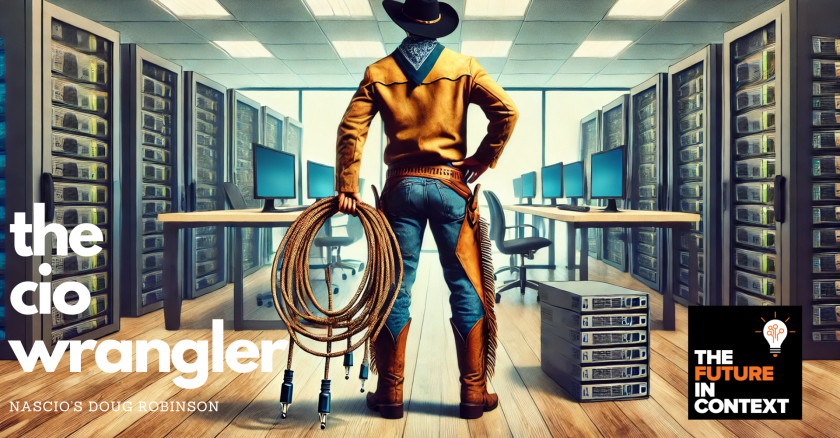As state CIOs prepare to gather in New Orleans for their association’s national conference next week, it is worth taking stock of the public-sector IT community — strategic and operational complexities, leadership, strategic planning, partnership-building and relentless change in technologies and citizen expectations.

Show Notes
Here are the top five takeaways from this episode:
1. The Continuing Evolution of the State CIO Role: The interview delves into the evolution of state CIOs from a back-office, technical role into a central leadership position that drives government transformation. The focus has shifted from managing “boxes and wires” to leadership in public service delivery and digital innovation.
2. Technology, Digital Services, and Future Challenges: The future of state IT focuses on improving the delivery of digital services to citizens. Robinson emphasizes the need for states to embrace new technology, human-centered design, and improved digital identity management, while also preparing for emerging trends like AI. He stresses that public-sector IT must modernize to meet citizen expectations, akin to the private sector.
3. From Nothing to Permanent Presence in Government Affairs: Robinson traces NASCIO’s evolving focus on government affairs, emphasizing the importance of engaging with federal partners and state legislators. He recounts how the association’s advocacy efforts have grown over the years, including the establishment of an office in Washington, D.C., to represent state IT interests more effectively.
4. Balancing Member Expectations and Equity: As a membership organization, NASCIO faces the challenge of balancing diverse and sometimes conflicting member needs. Robinson discusses how NASCIO ensures member equity by treating all states and corporate members fairly, regardless of size or influence.
5. Chief AI Officers and Emerging Leadership Roles: The conversation touches on the rise of new technology-related leadership roles in state governments, such as chief AI officers, chief privacy officers, and chief information security officers. Robinson notes that these roles may or may not report to the CIO and discusses how NASCIO has embraced these emerging leaders by creating communities of practice to foster collaboration among them.
Previous Episodes
-
Future in ContextThe organization that popularized civic hackathons is now taking on the responsible use of AI in government. Code for America draws on the collective expertise of the public, tech and nonprofit sectors to tackle societal challenges.
-
Future in ContextStatewide cybersecurity initiatives, like whole-of-state programs, are offering essential support to smaller communities and agencies. Backed by federal funding, they aim to bridge resource gaps and strengthen defenses against cyber threats.
-
Future in ContextState lawmakers are working to define key terms and address risks as AI gets integrated into everyday life. California state Sen. Thomas Umberg talks about balancing regulation and innovation.
-
Future in ContextA former mayor of Compton, Calif., who oversaw the country’s largest experiment with universal basic income, thinks a new software platform can help bootstrap underserved communities.














